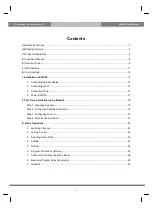
3. TXUSRCLK can be tied to
1’b0
if GEN_TXUSRCLK =
1’b1
.
TXPROGDIVCLK Driving GTM Transceiver TX in 128-Bit, 160-Bit, or
256-Bit Mode
In the following figure, TXPROGDIVCLK is used to drive TXUSRCLK and TXUSRCLK2 in 128-bit,
160-bit, or 256-bit mode in a single-lane configuration. In all cases, the frequency of
TXUSRCLK2 is equal to half of the TXUSRCLK frequency.
Figure 28:
Single Lane—TXPROGDIVCLK Drives TXUSRCLK and TXUSRCLK2 (128-Bit,
160-Bit, or 256-Bit Mode)
Design in UltraScale
Architecture
÷1
UltraScale
Devices GTM
Transceiver
TXPROGDIVCLK
BUFG_GT
1
TXUSRCLK2
2
TXUSRCLK
2
TXDATA (TX data width = 128/160/256 bits)
÷2
BUFG_GT
1
X20913-111918
Notes relevant to the figure:
1. For details about placement constraints and restrictions on clocking resources (such as
BUFG_GT and BUFG_GT_SYNC), refer to the UltraScale Architecture Clocking Resources User
Guide (
2. F
TXUSRCLK2
= F
TXUSRCLK
/2.
Similarly, the following figure shows the same settings in a multiple-lane configuration. In a multi-
lane configuration, the middle-most GTM transceiver should be selected to be the source of
TXPROGDIVCLK. For example, in a multi-lane configuration of six GTM transceivers consisting
of three contiguous Duals, one of the middle GTM transceivers in the middle Dual should be
selected as the source of TXPROGDIVCLK.
Chapter 3: Transmitter
UG581 (v1.0) January 4, 2019
Virtex Ult GTM Transceivers
61
















































